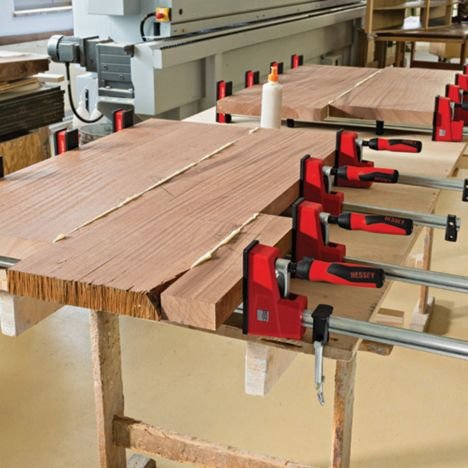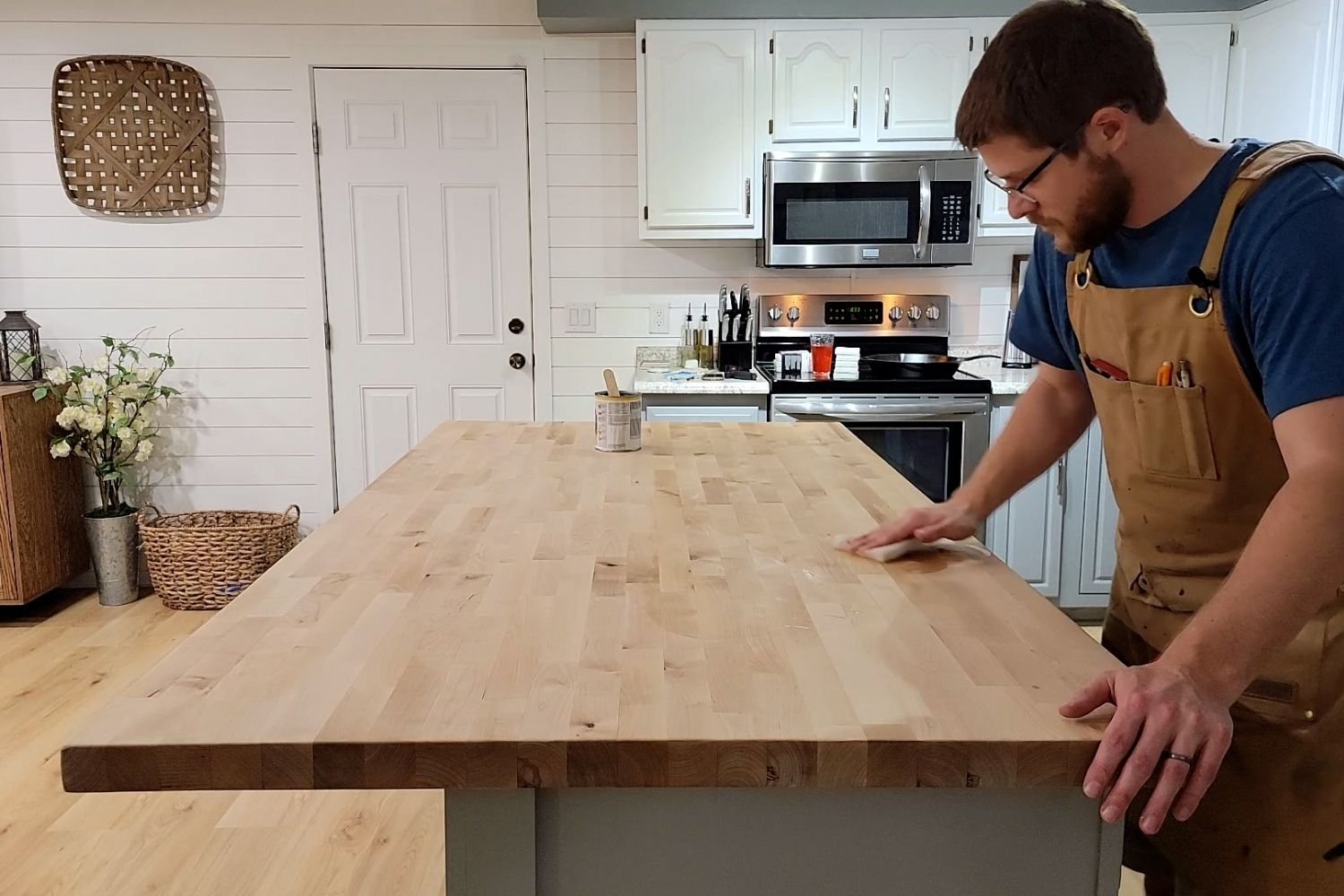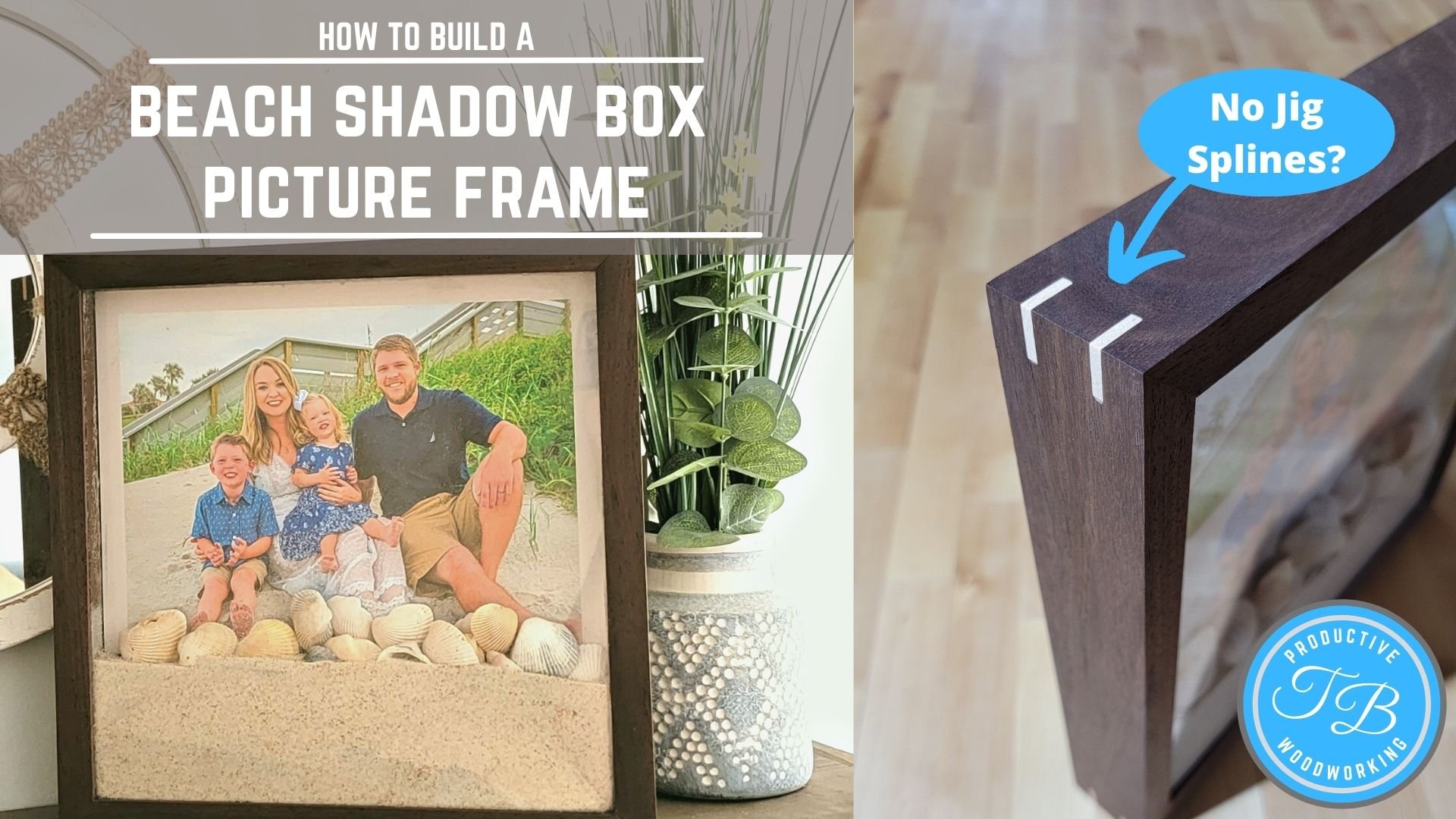The Best Clamps For Woodworking Projects (Complete Guide)
Woodworking clamps are an essential tool in any woodworker's shop and for your diy projects, so finding the right clamp for the job is important. Luckily there is always a tool for the job and in woodworking each clamp is designed for a specific task. There are many different types of clamps, but which are the best kind of clamp for your projects? In this complete guide, we'll provide you with a comprehensive list of the best woodworking clamps for your projects, from basic clamps to more specialty clamps. We'll also detail the types of woodworking clamps and give you a few tips on how to choose the perfect clamp for your woodworking projects.
F-Style Clamps
F-style clamps are named for their shape which look like the letter "F" and is one of the most common style of clamps found in a workshop. F-style clamps have a long handle and two metal jaws that are mounted to steel bars that come together to grip whatever you're working on. These are typically the cheapest clamps you can buy and where quality is not a big concern when looking for good clamps. F-style clamps are available in a different sizes, and they can be adjusted to fit the thickness of the wood that they are holding. Most f-style clamps come with protective pads to prevent slipping and protect your work surface from scratches. The adjustable pressure ensures that your project is held firmly in place and increasing pressure with a quarter turn.
F-style clamps are great for clamping down boards or panels, and I consider them as a universal clamp for any purpose. I find myself using the f-style clamps when assembling smaller projects and don't want to use a larger heavier clamp. A great way to use them is with angled clamping blocks to glue up and clamp different angles in your projects. With them being fairly cheap, you can quickly build up a large collection of clamps and be able to work faster during your big projects.
Parallel Clamps
An experienced woodworker knows that having a quality set of parallel clamps is important and would argue that they are the best clamps available. These clamps have parallel jaws that apply even pressure across the entire work surface while staying parallel during assembly and clamping. This is ideal for high pressure clamping of larger projects that require clamping at 90 degree right angle. A major benefit of parallel clamps is the ergonomic handle and secure grip wile applying pressure. A good set of parallel clamps are rather expensive but will become your most used clamp in the workshop. Parallel clamps also come in various sizes so if your primarily build small projects a 24" or 36" clamp may be perfect, or if you build larger pieces of furniture long ones are available at a premium cost.
Parallel-jaw clamps or sometimes referred to as cabinet clamps are perfect for cabinet making or large furniture projects. Yet since they are usually high quality you will be using them more often. They are also very helpful on panel glue-ups as they provide a flat surface using the bars and you don't have to worry about the bar bending. Parallel clamps by far outperform F-style clamps and offer far more clamping pressure and throat than bar clamps or pipe clamps.
Trigger Clamp or Quick Grip Clamps
Trigger clamp or quick grip clamps are a versatile clamp and fast-action that can be used for a variety of projects. They have a pistol grip handle that is squeezed with a trigger mechanism to close the clamp and apply pressure and releasing the ratcheting system to release the pressure. This unique mechanism makes them easy to use with one hand, and is invaluable if you need an extra hand. Quick clamps also have soft jaw caps to prevent any scratches or scrapes to your wood. The most popular is the Irwin quick-grip clamps and are the best wood clamps for new woodworkers or the diy enthusiast. I particularly enjoy using them due to their ease of use and ergonomic design making quick clamping super easy. They are not a heavy-duty clamp but come in a wide variety of sizes that make them perfect for most diy projects.
The main uses for a quick clamp are light and medium duty clamping that is temporary. They are perfect to have lying around to hold wood pieces together while screwing in pocket hole joinery or aligning two panels. I don't recommend them for glue ups as they don't exert much pressure and some of the trigger clamps could slip over time.
Bar clamp or Pipe Clamp
Woodworking pipe clamps are a simple design, typically made of black pipe and mainly for heavy-duty use and sometimes referred to as h-style pipe clamps. They consist of pipe clamp fixtures on either end of the black pipe and have a sliding head that locks in for clamping pressure. They can be bought in various lengths, depending on the pipe available at your local hardware store allowing you to have larger bar clamps than traditional f-style or parallel clamps. These types of clamps can be found in lengths from a few feet or unlimited with couplings to combine multiple black iron pipes. This type of clamp is particularly useful for large projects where a lot of pressure is needed across a wide surface area. Pipe clamps are typically used for larger projects like kitchen table tops or large panel glue ups. I have also used then when rower clamping surface, so they're good for smaller pieces of wood. Pipe clamps have a wider clamping surface, so they're better for larger pieces of wood.
Hand and Spring Clamps
Spring clamps or hand clamps are a versatile tool that may be used in several ways in a woodworking shop. They are typically small and easy to use, making them a popular choice for many small projects or in tight spaces. Spring clamps can be used to hold pieces of wood together or small items while they are being glued. They have a very small area of clamping pressure exert a few pounds of force and come in a range of sizes usually sold in large packs. Pinch clamp also have built in rubber pads to prevent any marring.
Strap Clamps or Band Clamps
One type of clamp that is often overlooked is the band clamp or sometimes referred to as a strap clamp. They are perfect for gluing up boxes or odd shapes that require unique clamping pressure. Band clamps use a strap to wrap around your workpiece as well as rubber jaws along the strap to provide pressure and prevent any marring from the strap. The best use for band clamps are for complex miter joints with 3 or more parts or boxes with mitered edges. If you are looking for perfectly glued miter joints on your next project I would highly recommend picking up a band clamp.
Right Angle or Corner Clamps
When working with wood, having a right angle clamp can be extremely helpful in achieving precise corners. This type of clamp allows you to securely hold two pieces of wood together at a 90 degree angle, and is especially useful when working with small pieces or when accuracy is critical. The best uses are when building picture frames, cabinet doors and other complex woodworking projects. Corner clamps are especially helpful and act as an extra set of hands for cabinet assembly or constructing a picture frame. Now this one clamp is not going to be used very often but if you have a specific woodworking project that requires precision you need this clamp.
Hand Screw Clamps
Woodworkers know that a hand screw clamp is a great tool to have in their arsenal and the traditional design makes it easy to use. These clamps have a variety of benefits that make them ideal for use in a wide range of projects. Their throat depth and long screw make them perfect for securing boards and panels together while also being able to hold things vertically. Additionally, their long reach makes them ideal for clamping objects at a distance in comparison fo bar clamps or f-style clamps. Hand screw clamps are one of the first traditional clamps used in woodworking and are very easy to use, and are a good idea for beginners and experienced woodworkers alike.
Bandy Clamps
Bandy Clamps are a very unique invention by Rockler to easily clamp edge banding to a workpiece. If you regularly use hardwood lumber to edge band plywood I would highly recommend purchasing some bandy clamps. They are expensive and you typically need a lot of them for a large furniture project but they would be worth the money. Using bandy clamps designed by Rockler will allow you to glue your edge banding without using a brad or pin nails as temporary clamping pressure and give you a cleaner look and save time from not filling nail holes.
Toggle Clamps
A toggle clamp is a type of clamp that uses a toggle action to apply pressure while being secured to a workbench using dogholes or t-tracks. The main types of toggle clamps used in woodworking are horizontal, vertical, in-line and latch-action. Toggle clamps are commonly used on a workbench to hold down workpieces while you work on them. The main feature of toggle clamps is the ability to apply pressure without having to constantly adjust your clamps. This ability to not have to adjust your clamps is great for repetitive task like sanding, drilling holes, routing, or using hand tools.
Panel Clamps
Panel clamps are a versatile tool for gluing large panels together. Panel clamps provide four sides of pressure which easily hold the panels firmly in place and has perfect alignment while the glue dries. The clamps essentially have built in clamping cauls witch will make sure all your panels are aligned without having to use biscuits or dowls. This makes it a quick and easy way to create a large sturdy panel without having to use any nails or screws. Panel clamps are also great for creating glue ups for furniture construction or cutting boards, as they provide even pressure on all sides.
Painters Tape
You may be surprised but it can be helpful to use painters tape instead of clamps in some instances. Painters tape is inexpensive, and it has a low clamping pressure, but it allows you to precisely align glue ups for intricate projects. If you only need to hold the workpieces together while the glue dries for aesthetics and it won't be a structural component painters tape is the best option. I use painters tape when building home decor projects or small picture frames that don't require much clamping pressure.
Clamp Storage
Having a dedicated storage space for your clamps will make your life a easier. If you have a large collection of clamps you may want to build a clamp storage rack or buy something to quickly get organized. The best thing about clamp racks is that they can be mounted on the wall or in a corner to save space. I personally have bought steel clamp racks for my larger parallel clamps and they work great and I never have to worry about where they are. If your looking to save some money, DIY clamp racks work great as well and I have a few of those in my workshop that have been invaluable.
Do you have enough?
Clamps are an essential tool in any workshop and are used for every woodworking project. I hope this guide helped you determine which clamp to use the next time you build something. Keep in mind that you will never have enough clamps no matter how long you have been woodworking. The number of clamps you have does not determine the quality of what you build so don't wait for the right tools. Be sure to keep this guide in mind for your future projects or the next time you're shopping for clamps. Thanks for reading and go out and build something!
Related Articles
If you have any questions, comment below.
Let’s talk about it!

























